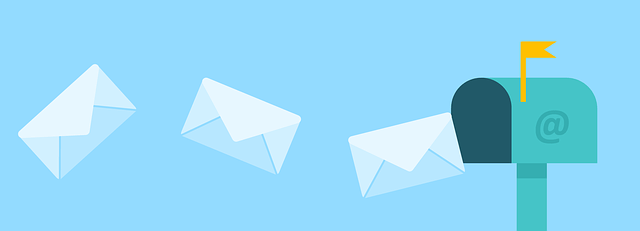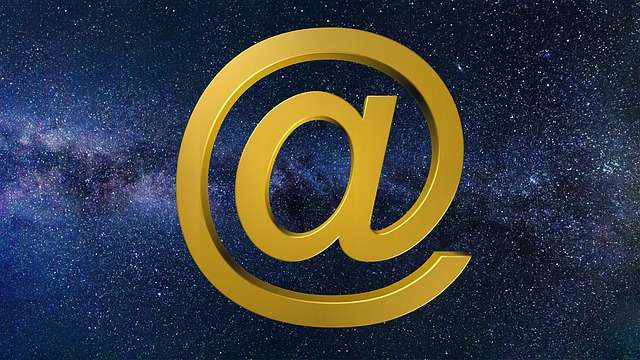
by Suellen | Email Marketing, Online Success
Email sequences can lend a major thrust to your business. So here are a few tips to make them topnotch.
When I say, “email sequence,” I’m referring to a set of emails with a certain subject matter which you send to a specific group of subscribers. Sometimes daily. Sometimes weekly or twice weekly. Sometimes over a longer period.
The most common type of these emails would be your welcome sequence. You might want to send several welcoming emails letting people know about your business and reaching out to them for a reply or some feedback.
Other sequences can be designed for a product launch or a free course signup. Or you could just create a sequence for certain subject matter you would like to share with your audience.
These sequences will be set up in your autoresponder and will go out automatically when your people trigger them. (Usually through a signup). These “triggers” can be “behaviors” in certain cases.
A couple of the most common behaviors include the downloading of your content or purchase of your products. More sophisticated systems can even include the browsing history of your customer.
There can also be time-based triggers. You can set up your autoresponder to send a sequence a certain number of days after a purchase.Or in some instances, the subscriber’s birthday.
These criteria should be set depending on your niche and email marketing needs. However, the way you craft the material is vital to your overall success.
These tips will help you develop compelling email sequences:
Set aside some time to Outline Your Purpose
First, you must know your goal, and in order to do that, you must know your audience, including the kinds of problems they are dealing with.
Second, what is the overall purpose of sending and creating the email sequence? Don’t just create an email sequence because you know it is the best marketing strategy. It helps if you have a clear goal and know what you want to accomplish.
Is your goal to educate your clients? To let them know that you are reliable and your emails will be useful to them? Is your goal to lead them into a special product launch?
Sometimes your email sequence will be part of a course they buy.
When you set up your autoresponder, you will be able to signify the number of days between emails. This is very helpful when setting up courses or other sequences.
Perfect Your Title and Subject Lines
We’ve talked about this before, but your subject lines and titles are very important.
Believe it or not, there was a day when people were excited to get an email! Any email!
Obviously, those days are long gone. So think about how you go down the list of emails you have received. What makes you open them? A catchy title. One that looks like it might have valuable information. Or one that could help you solve a problem.
So take this cue for your titles. If you want your people to open your emails, have titles that will stand out and grab their attention.
Then you can check your open rates. This metric allows you to keep track of how your content or emails are performing. If your open rate is not what you want it to be, it is likely due to your titles or subject lines.
Make sure they are relevant, short to the point, and have your most important keywords in the beginning. While they may be short, you don’t want them to be boring or crowded with too much information to look like a spam email.
If your subject lines look like they are spam, they will go t the spam folder.
Always include a Call-To-Action
For every goal you set, there should be a separate call-to-action that helps you to achieve it. But, again, make sure it is easy to understand, complete and obvious to your reader.
The call-to-action (CTA) can be to sign up for or purchase something. However, it can be for something a simple as clicking on a blog post link.
Be Specific, Clear, and Educational
Keep each email straight to the point, and don’t make it too long. Always use your email as an opportunity to educate and provide value to your customer.
The point is to exceed the expectations from the start to gain their trust and commitment. The more educational content you provide with accurate information that helps your subscribers, the more likely they will trust your authority and establish your credibility.
If your emails are long and rambling, very few people will read them. They just take too much time and effort. So respect your customers’ time and be as concise as possible.
Be sure your email sequences are worth your time and effort.
These tips should help you to craft effective email sequences. When done correctly and with some forethought, you will find these sequences to be a major part of your email marketing plan.
They will be well worth the trouble.

by Suellen | Email Marketing, Online Success
Do you segment your email lists? In other words, do you divide your lists into groups which are specifically appropriate for them?
Separating your email list subscribers into different segments of your audience is a practice which most marketers recommend.
For instance, if someone has signed up for a free ebook aimed at writing a book, they should be kept in a similar flow of content. You wouldn’t immediately start sending them material pertaining to weight loss.
When subscribers sign up to your email list, they will receive appropriate emails. Not the same emails as people who are in another targeted sequence. Thus, segmentation allows you to better market and communicate with your new potential customers and readers.
Most lists are organized based on three different factors: demographics, location, behavior, and interests.
Depending on your niche and marketing goals, you may need to organize them differently. However, the most popular way to figure your segmentation is to observe their online behavior.
Once they are opted-in to your campaign, readers are then divided based on how they interact with you and your content. Do they open more often than others? Do they click-through links frequently?
If so, it would be good to put them on a different path from those who are less likely to open or click-through your emails. They clearly are interested in your products and information.
There are three main reasons list segmentation is an important step in your email marketing process:
Segmentation Allows You to Send More Targeted Information
Most businesses will have more than one buyer’s persona, which means not every email you send needs to go to every lead or customer on your list. It also means you likely have more than one goal in mind when it comes to email marketing.
Segmenting allows you to pick certain keywords or information in order to organize and better target your customers with different key pieces of content.
For example, readers who have bought your products are more likely to get content about the products they purchased or new products to try. On the other hand, new subscribers who have not purchased a product, will be reading content on why the products benefit their life. Or perhaps information about you and your business, getting to know you better.
By observing the behavior of these new customers, you can also get to know them better. Here you could add surveys or questions to increase your understanding of these new people.
Segmentation helps you to increase overall conversions
List segmentation better targets your readers, which allows you to communicate more effectively. When you understand which point of the buyers’ journey they are on, then you have a better chance of making sales.
Segmentation improves your engagement and your reputation
Understanding your audience and communicating with them appropriately are keys to increasing your conversions and running successful email campaigns. Better communication provides more value to your customers. As you send appropriate material, you are further building your reputation and improving your engagement—two important metrics for creating a sustainable business.
The bottom line is this: the reason for list segmentation is to ensure the right emails are being sent to the right people.
With that in mind, it’s easy to see that with segmentation you are setting yourself up for greater success in achieving your email marketing goals.
Though it can require some thought and action, segmentation is worth the extra effort.
You’ll be glad that you took the time.

by Suellen | Email Marketing, Meeting the Challenges, Online Success
Email automation. What a gift!
With automation, we can set up emails to go out when we are sleeping – or on vacation. And we can set up as many as we want to go out when people sign up for different products or offers.
These are often referred to as automation flows or autoresponder flows. Sets of emails sent automatically to subscribers to streamline and enhance our email marketing process. Automation can be set based on time or on a certain set of events – such as signing up for a newsletter.
Automation can send them a welcome email. It will also ensure they receive the other emails in the series consistently.
What’s more, automation can better segment our lists to target and refine our communication. Thus, better results and better conversions.
Automation can do what would be impossible for us to do.
Let’s look at five common email flows you should implement in your email marketing plan:
Welcome Email Series
First, establish each new connection with a welcome email. If someone subscribes to your list, you should never neglect the opportunity to say hello and thank you for joining the community. They need to know at first contact what to expect and when to expect it.
Abandoned Cart Email Series
When a possible customer starts to purchase and then doesn’t follow through, an email series can be quite effective. That person was interested, but decided for some reason not to buy.
This is a straightforward reminder crucial for e-commerce businesses. This email reminds the customer that they left items in their cart to purchase.
Often times this is a great opportunity to offer a small discount and help your customer follow through with the purchase.
Personalized Discounts
Some marketers ask for a birthday, anniversary, or other personal information when a customer signs up. Then when the customer’s birthday or anniversary comes around, they can be recognized, making them feel special.
Post-Purchase Series
This is a set of emails sent after a subscriber makes a purchase or follows a certain call to action. This shows that you appreciate their business and hope to continue to provide value to them. It also ensures they use the products or services correctly to maximize their usefulness.
This is a great time to ask questions and give feedback to establish your trustworthiness and credibility.
This series can be a tremendous boost to your business.
Educational Email Series
Also known as lead nurturing content, this is a very valuable series of emails. This series can build a connection with your subscribers to keep their interest and understanding about your business, products, or services.
The more education and value you provide your subscribers, the more likely they are to become loyal customers.
Remember, automation is there to keep you consistent and help reduce tedious and mundane work.
Never approach this as something you can set up and ignore completely.
If you want to crush your email marketing goals, always keep track of the results and test new automated series. Design and tweak your automation to get the best results.
Your customers will love you for it!

by Suellen | Email Marketing, Online Success
Today we want to talk about 5 Common Email Marketing Mistakes. Avoiding these can make a huge difference in your email marketing success.
While email marketing may be the best way to engage and increase sales, you can easily make mistakes. The email marketing process requires preparation, review, and evaluation to keep it running smoothly and successfully.
Unfortunately, if you don’t know what you are doing, you can fall into some common poor habits that result in a poor return on investment.
So let’ take a look at what to avoid.
Avoid: Only Using Emails to Make a Sale
If the only emails you send are promotional and full of sales links, you are already doing a disservice to yourself. Many of the people will unsubscribe – or stop opening your emails.
Nobody likes the sell, sell, sell type of emails.
Instead, use email to teach your readers something you want them to know, and even better, make sure it solves a common issue or problem for them.
Then add other smaller promotional sequences throughout you campaigns.
Avoid: Ignoring Your Bounce Rate
A high bounce rate means that your email list is defective.
Where are you getting your email addresses? If you are getting them from optins, at your website or other places, probably most of your addresses are good.
However, purchasing lists or using third-party addresses like Google and Microsoft can signal spam warnings.
Check often to make sure that your list is a good, operative one.
Avoid: Not Understanding Your Audience
Take some time to understand your audience. What are their needs? What are their goals?
By taking this time and initiative, you will be able to better send material which will benefit them.
By not taking the time to understand your audience you run the risk of poor communication and poor quality material you are sending.
Email marketing is powerful because subscribers view it as more personal – providing you the opportunity to form a deeper connection and understanding through personalized content.
Avoid: Disregarding the Devices your Subscribers Use
In other words, avoid ignoring the device your readers use the most to read and engage with your content.
This is crucial. Today 30%-40% of people read their email from their smartphone. (Not me, because I prefer my laptop).
However, smartphones are far more available to people than computers, so many people choose that method.
It could be that most of your subscribers read your emails and other content on their phones. Therefore, you must ensure your content is optimized to view and click-through for mobile phones.
How do you optimize for smartphones? Shorter paragraphs and sentences. Lots of white space.
Also, make sure that your email provider optimizes for phones. Not all of them do.
Phones are here to stay – and even increase in use – so remember to present emails which are readable on these devices.
Avoid: Having Poor Calls-To-Action or None at All
Don’t just sell, sell, sell, but having a good call-to-action is important.
First, when you get your readers to click, they are nodding that they like your material. Then when they get another email from you, they are more likely to read it.
Just human nature.
So every email should have a clear goal. There should be an easy-to-use and understand call-to-action (an option to click).
When they click on your call-to-action, your readers should find something of value – whether it’s a purchase or a freebie. You are helping them solve their problems – and helping yourself secure a loyal customer.
It’s a win-win!
There you have it. Five very common mistakes in email marketing. If you check your marketing frequently, you will see if any of these mistakes are cropping up. If so, you’ll be able to fix them – and move on to greater success in your campaigns.
Remember: No campaign is perfect. We are all works in progress. If these crop up, don’t be discouraged. Just fix them, and move on.

by Suellen | Email Marketing, Online Success
Once you have people signed up to your list, you want to treat them with great respect. Let them know how much you appreciate them.
One way to do this is through lead nurturing email campaigns. These are personalized and automated emails sent to subscribers throughout their journey with your business.
These emails provide value to your customers – and at the same time, maximize the potential of your list and ensure its sustainability.
It’s about not neglecting the leads you worked so hard to get in the first place. Statistics show that it costs a lot more time and money to find new leads than to nurture those you already have.
Here are a few tips for creating lead nurturing email campaigns:
Start With a Welcome Email Series
The moment someone opts in, you should thank them and introduce yourself. This should provide a basic overview of your values and your business goals. You don’t want to start with a long, drawn-out email. This would overwhelm them.
This is also a great moment to encourage your customers to reply by asking them a few questions about themselves and what kind of problems they are dealing with. Make the readers feel like they made the right decision to opt-in. Let them know that you are interested in them and their success.
Create Weekly and Monthly Newsletters or Updates
Keep your readers up-to-date on trending topics, news, and updates within your business and industry.
Please don’t use these messages to sell. Instead, use them to educate and get your readers more engaged in other communities such as your Facebook Group. Tell your audience about new products or services you are working on and any additional valuable information they can use.
When you continue to provide value to your customers, they will want to stay in touch.
Send Segmented Promotional and Educational Campaigns
Use birthdays, anniversaries, and other important dates and information to your advantage.
List segmentation allows you to send more personalized messages and education to those who care about your content. It also allows you to tailor and target your message better, as no two readers will be the same or on the same buyers’ journey.
This segmentation requires a little extra effort, but the time spent is worth it.
Always include a Follow-up and Way to Reply or Engage
Send emails that ask for some feedback and a way to engage further or reengage your subscribers.
Invite them to social media pages or tell them to reply to the email. The replies you get can ensure the content you create is valuable and solves their problem.
So there you have four tips for establishing your relationship with your list members.
One of the biggest mistakes marketers make is to have people sign up on their email list – and then either sell, sell, sell, or ignore them entirely.
Let’s make it our purpose to treat our list with respect. We want to give them something of value – on a continuing basis.
As we do that, these “names” become friends and many of them will become partners on our marketing journey.
















